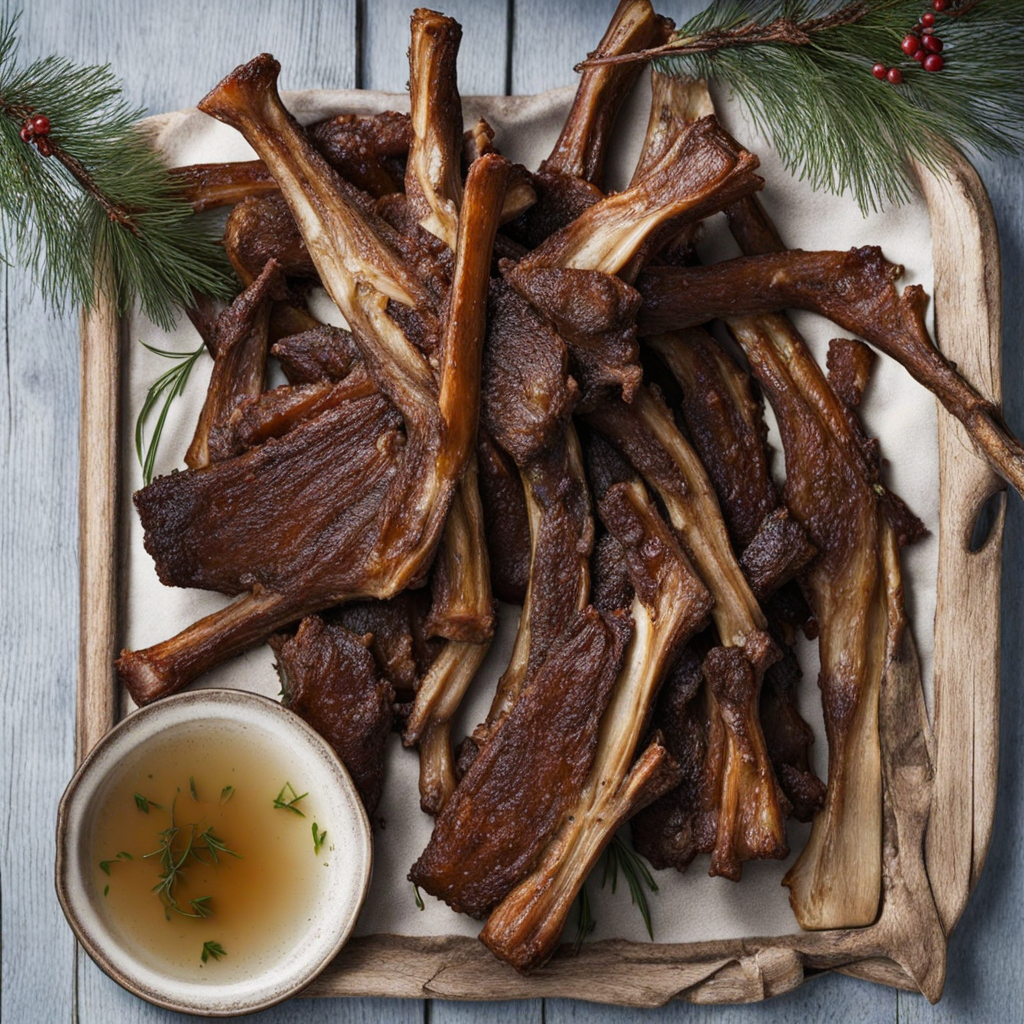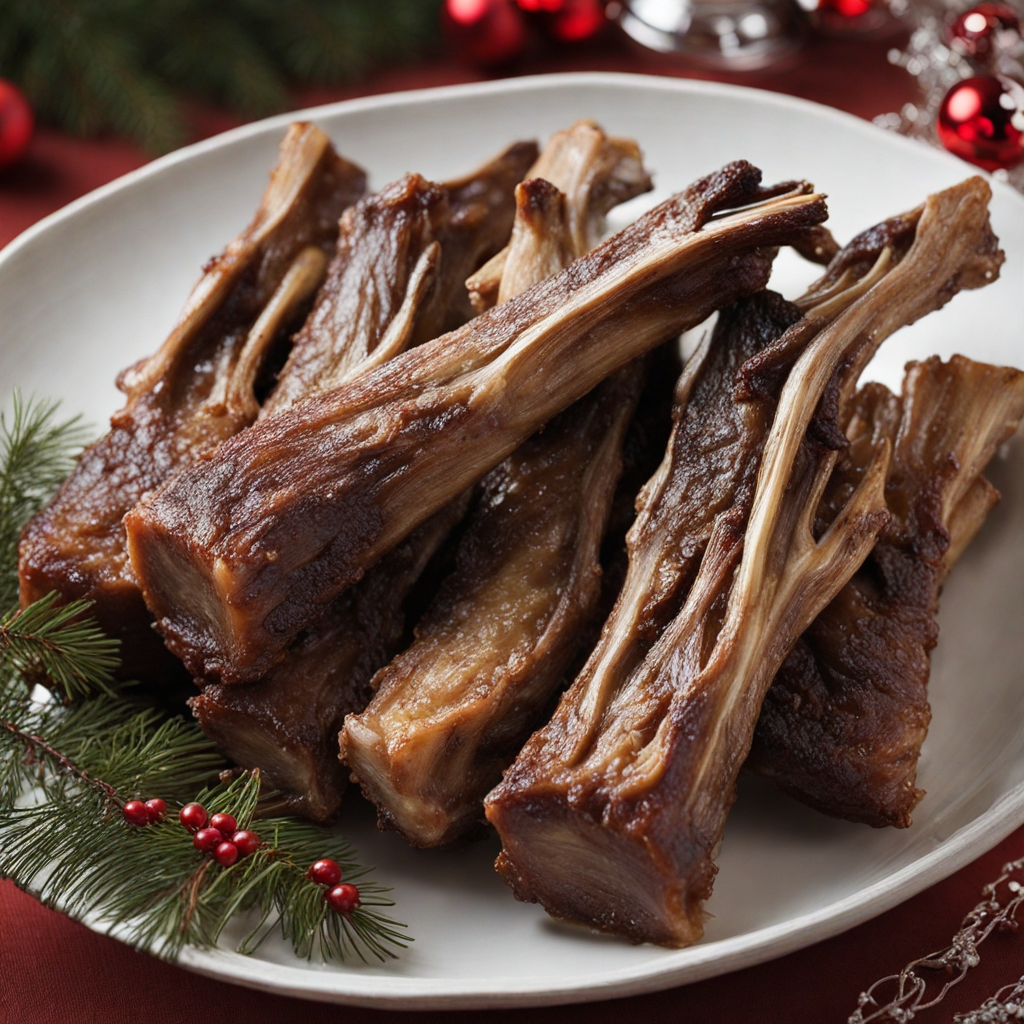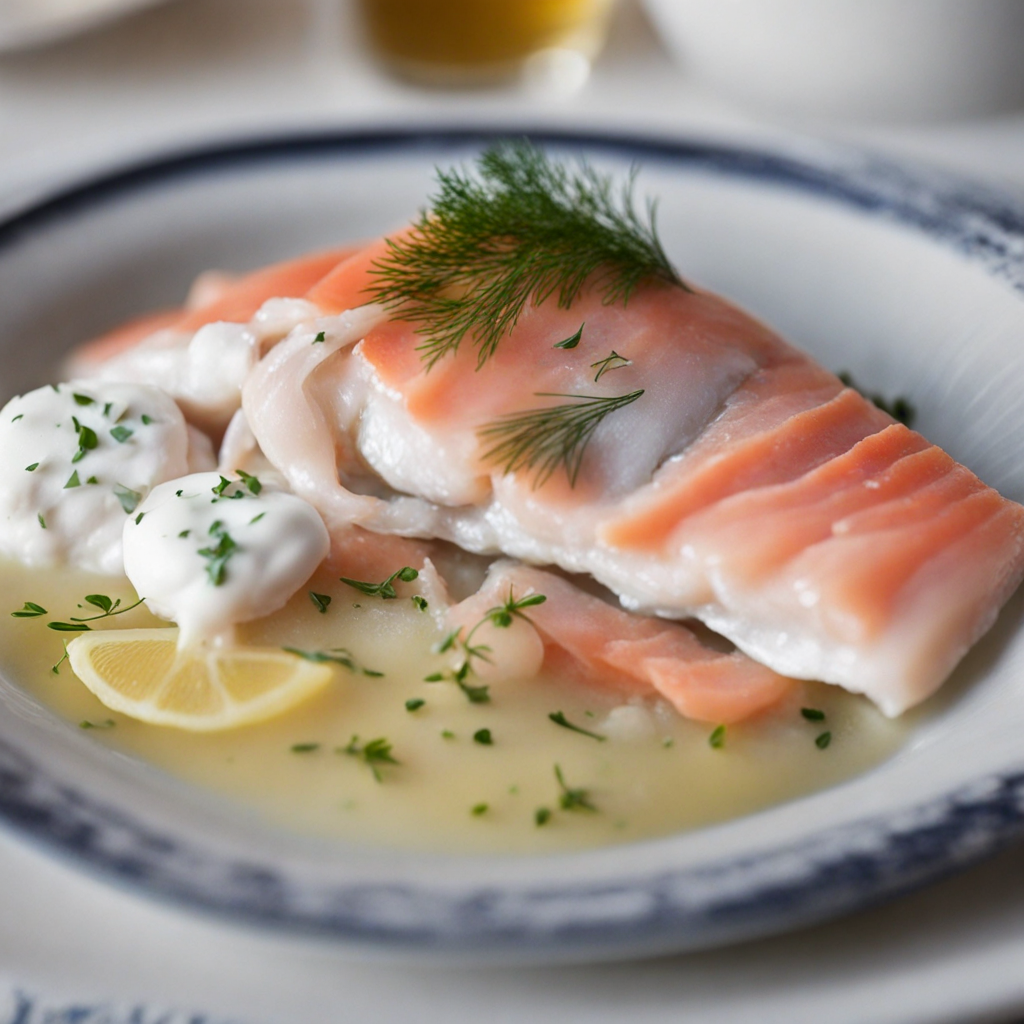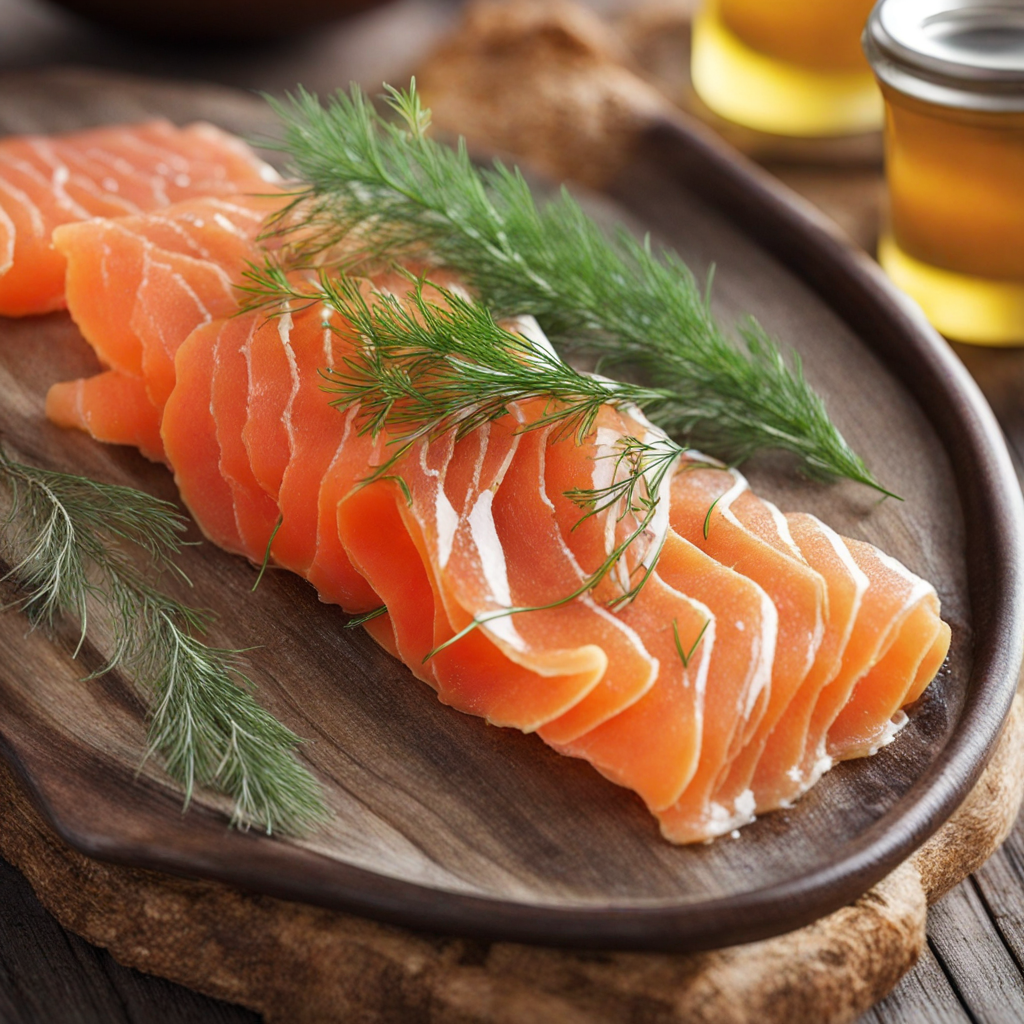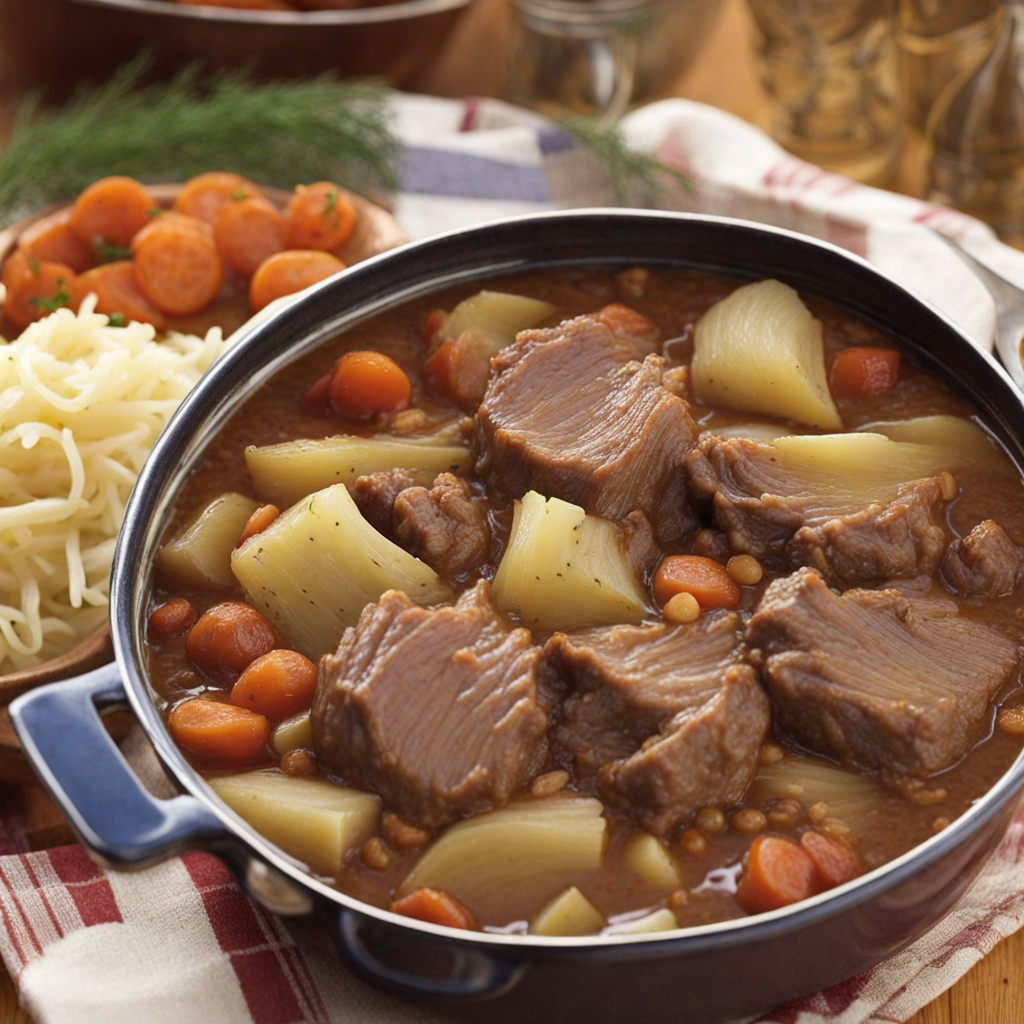Pinnekjøtt
Pinnekjøtt is a traditional Norwegian dish that embodies the essence of the country's culinary heritage. Made primarily from lamb ribs, this dish is characterized by the unique method of preparation that involves salting and air-drying the meat. The dried ribs are then steamed over birch branches, which infuse the meat with a subtle, smoky flavor, complementing the natural richness of the lamb. The result is tender, succulent meat that practically falls off the bone, offering a hearty and satisfying experience that warms the soul during the cold winter months. Often enjoyed during festive occasions, particularly around Christmas, Pinnekjøtt is typically served with a side of mashed rutabaga, known as "kålrabistappe," and boiled potatoes. The combination of the savory lamb, the creamy root vegetable, and the fluffy potatoes creates a harmonious balance of flavors and textures that highlight the rustic nature of Norwegian cuisine. Many families have their own variations of the dish, adding personal touches that reflect regional ingredients and traditions. Embracing the spirit of communal dining, Pinnekjøtt is often enjoyed with family and friends, making it a dish that brings people together. As you savor this unique culinary experience, you'll discover the depth of flavor that comes from centuries of tradition, as well as the warmth of Norwegian hospitality. Whether you're seeking new tastes or a connection to the cultural roots of Norway, Pinnekjøtt offers an unforgettable journey into the heart of Scandinavian gastronomy.
How It Became This Dish
The History of Pinnekjøtt: A Culinary Tradition of Norway #### Origins Pinnekjøtt, the iconic Norwegian dish made from salted and dried lamb ribs, has deep roots in the country's history and culture. The exact origins of pinnekjøtt are somewhat murky, but it is believed to date back to the early Viking Age, around the 8th to 11th centuries. The practice of preserving meat through salting and drying was essential for survival in the harsh Norwegian winters. With limited access to fresh food during the colder months, Norwegians developed various preservation methods, among which drying and salting became prevalent. The term "pinnekjøtt" translates to "stick meat," which refers to the traditional way it is prepared. The ribs are typically cut from lamb or sheep, seasoned with salt, and then dried or air-cured. The name itself hints at the historic method of cooking; pinnekjøtt is traditionally steamed over birch sticks, which adds a unique flavor to the meat. #### Cultural Significance Pinnekjøtt holds a special place in Norwegian culinary traditions, particularly during the Christmas season. For many families, it is the centerpiece of the festive meal, often served alongside other traditional dishes such as kålrabi (rutabaga) and potatoes. The dish is a symbol of togetherness and celebration, embodying the spirit of Norwegian heritage. The preparation of pinnekjøtt is often a communal activity, where family members gather to salt, dry, and cook the meat together, reinforcing familial bonds and passing down culinary knowledge from one generation to the next. This practice is especially common in rural areas, where traditional methods are cherished and preserved. While pinnekjøtt is most commonly associated with Christmas, its significance extends beyond the holiday. It is a dish that embodies the resourcefulness of the Norwegian people, showcasing their ability to create flavorful meals from limited resources. This aspect of Norwegian culture is reflected in the widespread use of locally sourced ingredients and traditional cooking techniques, which emphasize sustainability and respect for nature. #### Development Over Time As Norway transitioned through various historical periods, pinnekjøtt evolved in both preparation and consumption. The introduction of modern refrigeration in the late 19th and early 20th centuries transformed the way Norwegians preserved and prepared their food. While traditional methods of salting and drying remained popular, the advent of refrigeration allowed for greater accessibility to fresh ingredients, leading to a diversification of meat dishes. Despite these changes, pinnekjøtt has retained its status as a beloved Christmas dish. In the early 20th century, as urbanization increased and more families moved to cities, the tradition of serving pinnekjøtt during the holidays became even more pronounced. It became a way for individuals to reconnect with their rural roots and celebrate their heritage, even in urban settings. In recent decades, pinnekjøtt has experienced a resurgence in popularity, both in Norway and among the Norwegian diaspora. As interest in traditional and artisanal foods has grown, so too has the appreciation for this age-old dish. Food festivals, cooking classes, and cultural events have emerged, allowing people to learn about pinnekjøtt and its preparation firsthand. The rise of gourmet cuisine has also influenced the way pinnekjøtt is presented and served. Chefs have begun to experiment with the dish, incorporating modern techniques and pairing it with unexpected flavors. This evolution has led to a new generation of enthusiasts who are eager to explore and reinterpret traditional Norwegian cuisine. #### Modern-Day Pinnekjøtt Today, pinnekjøtt is widely available in supermarkets and specialty stores, particularly during the Christmas season. Many families still opt to prepare it using traditional methods, while others may choose to purchase pre-prepared versions. The dish is commonly served with a side of kålrabi, which is often mashed or boiled, and potatoes, creating a hearty and comforting meal. In addition to its traditional Christmas associations, pinnekjøtt has found its way onto restaurant menus across Norway. Chefs are increasingly showcasing the dish in innovative ways, from pairing it with craft beers to serving it alongside seasonal vegetables. This culinary renaissance has helped to elevate pinnekjøtt from a humble traditional dish to a celebrated gourmet offering. Furthermore, pinnekjøtt has gained international recognition, thanks in part to the growing interest in Nordic cuisine as a whole. Food enthusiasts, chefs, and travelers are drawn to Norway's culinary heritage, and pinnekjøtt has become a must-try dish for those exploring the country's gastronomic landscape. #### Conclusion Pinnekjøtt is more than just a dish; it is a cultural emblem that represents the resilience and resourcefulness of the Norwegian people. From its origins as a means of preservation to its modern-day status as a cherished holiday meal, pinnekjøtt reflects the changing tides of Norwegian society and culinary practices. Its enduring popularity speaks to the importance of tradition and community in Norwegian culture, and it serves as a reminder of the deep-rooted connections between food, family, and heritage. As Norway continues to evolve, pinnekjøtt remains a steadfast symbol of the country's rich culinary history, ensuring that future generations will continue to savor this delicious and meaningful dish.
You may like
Discover local flavors from Norway


